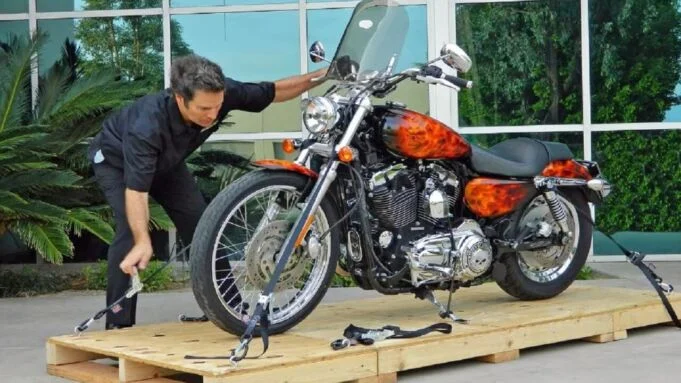Shipping a motorcycle can be a daunting task, especially for those who are doing it for the first time. Whether you’re relocating, selling, or sending your bike for an exhibition, ensuring its safe arrival is paramount. Here we will provide expert advice to help you navigate through the process smoothly and securely.
1. Choosing the Right Shipping Company
The first step in shipping your motorcycle safely is selecting a reliable shipping company. Look for a company that specializes in motorcycle transport and has a good track record. Read customer reviews, check their insurance policies, and ensure they have experience in handling motorcycles. A reputable company will offer a range of services, including door-to-door delivery, enclosed transport, and tracking options. Visit to find the best shipping company https://www.shiply.com/us/motorcycle-shipping
2. Preparing Your Motorcycle
Proper preparation is crucial to prevent any damage during transit. Start by cleaning your motorcycle thoroughly. This not only makes it easier to inspect but also ensures that it arrives in pristine condition. Document its current state by taking detailed photos from different angles, focusing on any existing scratches or dents.
Next, perform a mechanical check. Ensure that the tires are properly inflated, the battery is secure, and the fluids are at appropriate levels. However, it’s advisable to reduce the fuel in the tank to a minimum (usually about a quarter of the tank) to reduce weight and minimize safety hazards.
3. Securing Loose Parts and Accessories
Remove or secure any loose parts or accessories on your motorcycle. This includes items like saddlebags, mirrors, and any aftermarket additions that can be easily damaged. If you choose to leave any accessories attached, ensure they are tightly fastened and protected with bubble wrap or similar padding.
4. The Right Packaging
Depending on your chosen shipping method, you may need to crate your motorcycle. A sturdy, wooden crate is ideal as it provides significant protection. When crating, use straps and soft ties to secure your bike firmly in place, ensuring it cannot move during transport. Padding around the motorcycle can provide additional protection against shocks and vibrations.
5. Insurance Coverage
Ensure your motorcycle is adequately insured during transit. While shipping companies offer insurance, it might not cover the full value of your motorcycle. Consider purchasing additional insurance to cover any potential damage or loss during shipping.
6. Loading and Unloading
If you’re handling the loading and unloading, be extra cautious. Use a loading ramp and have someone assist you to prevent accidents. If the shipping company manages this, ensure they use proper equipment and techniques to safeguard your motorcycle.
7. Tracking and Communication
Choose a shipping company that offers tracking services. This allows you to monitor your motorcycle’s journey and receive updates on its status. Good communication with the shipping company is essential, so don’t hesitate to contact them if you have any concerns or questions.
8. Post-Shipping Inspection
Once your motorcycle arrives, inspect it immediately. Compare its condition to the pre-shipping photos to ensure no damage occurred during transit. If you notice any discrepancies, report them to the shipping company immediately to initiate a claim process.
Conclusion:
Shipping a motorcycle requires careful planning and attention to detail. By choosing a reputable shipping company, preparing your bike correctly, and ensuring proper insurance and tracking, you can significantly reduce the risks associated with motorcycle transportation. Remember, the safety of your motorcycle depends largely on the measures you take before and during the shipping process. With these expert tips, you can rest assured that your motorcycle will reach its destination safely and securely.







![What to Wear When Hiking in Summer [Stay Cool and Comfy] What to Wear When Hiking in Summer](https://tourinplanet.com/wp-content/uploads/2023/10/What-to-Wear-When-Hiking-in-Summer-238x178.jpg)















![25 Best Peruvian Foods You Must Try In Peru [With Recipes] Peruvian Food](https://tourinplanet.com/wp-content/uploads/2024/07/Peruvian-Food-100x75.jpg)



![What is The Marvelous VFR C500? – [Key Features and Overview] Marvelous VFR c500](https://tourinplanet.com/wp-content/uploads/2024/07/Marvelous-VFR-c500-100x75.jpg)
